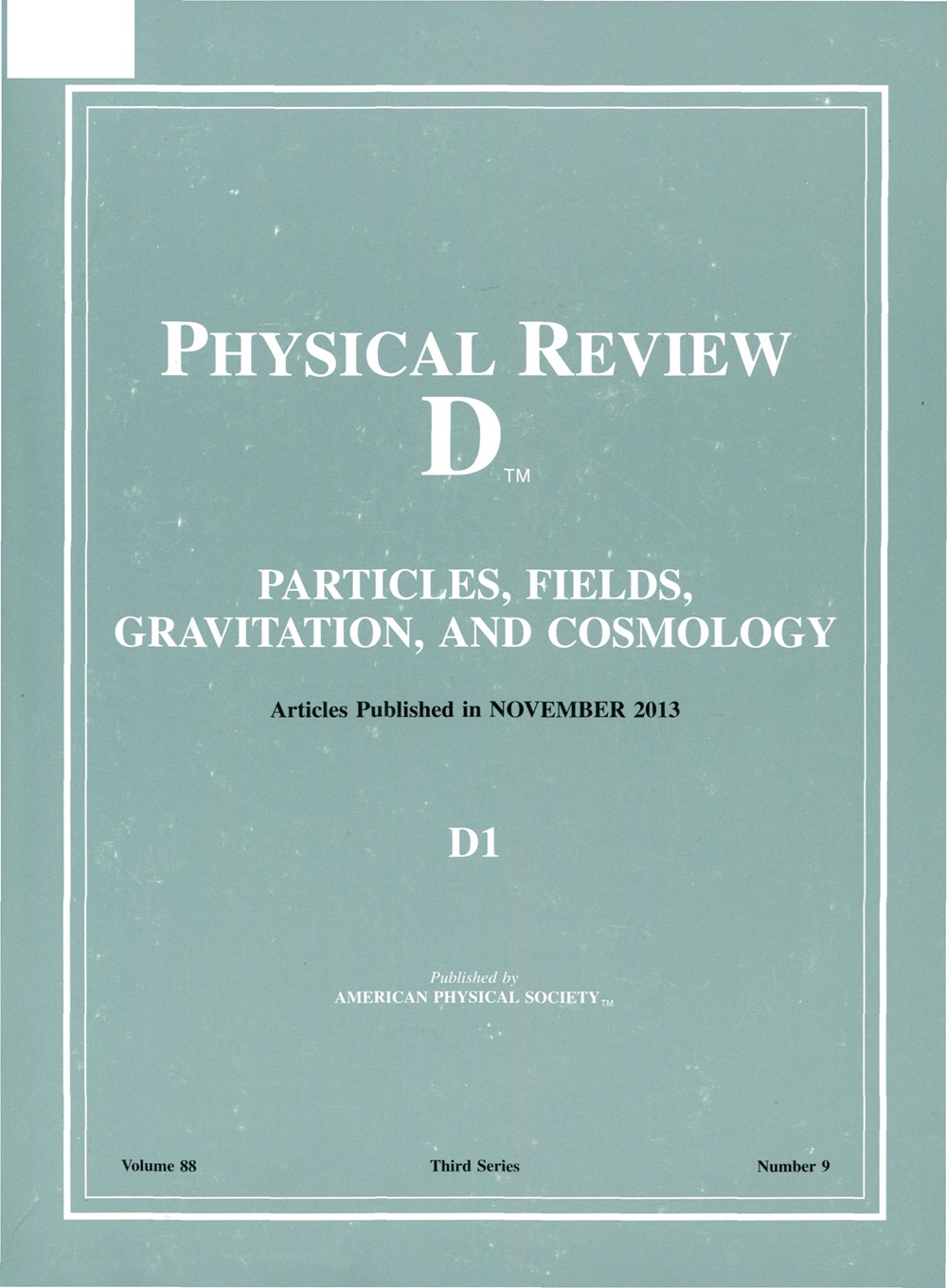风味依赖系统中的全息施翁格效应
IF 5.3
2区 物理与天体物理
Q1 Physics and Astronomy
引用次数: 0
摘要
利用爱因斯坦-麦克斯韦-迪拉顿(EMD)模型,结合晶格量子色动力学(QCD)的状态方程和重子数易感信息,研究了 Nf=0、Nf=2 和 Nf=2+1 系统中的全息施温格效应。研究发现,临界电场在 Nf=0 时最小,这表明与 Nf=2 和 Nf=2+1 的系统相比,施温格效应更有可能发生。在所有体系中,临界电场随着化学势和温度的增加而减小。此外,化学势分析证实,最大总化学势能随化学味数量的增加而增加,这表明现有粒子可能会降低粒子对产生的概率。 美国物理学会出版 2025本文章由计算机程序翻译,如有差异,请以英文原文为准。
Holographic Schwinger effect in flavor-dependent systems
The holographic Schwinger effect is investigated in systems with Nf=0, N f = 2 N f = 2 + 1 N f = 0 N f = 2 N f = 2 + 1 Published by the American Physical Society 2025
求助全文
通过发布文献求助,成功后即可免费获取论文全文。
去求助
来源期刊

Physical Review D
物理-天文与天体物理
CiteScore
9.20
自引率
36.00%
发文量
0
审稿时长
2 months
期刊介绍:
Physical Review D (PRD) is a leading journal in elementary particle physics, field theory, gravitation, and cosmology and is one of the top-cited journals in high-energy physics.
PRD covers experimental and theoretical results in all aspects of particle physics, field theory, gravitation and cosmology, including:
Particle physics experiments,
Electroweak interactions,
Strong interactions,
Lattice field theories, lattice QCD,
Beyond the standard model physics,
Phenomenological aspects of field theory, general methods,
Gravity, cosmology, cosmic rays,
Astrophysics and astroparticle physics,
General relativity,
Formal aspects of field theory, field theory in curved space,
String theory, quantum gravity, gauge/gravity duality.
 求助内容:
求助内容: 应助结果提醒方式:
应助结果提醒方式:


